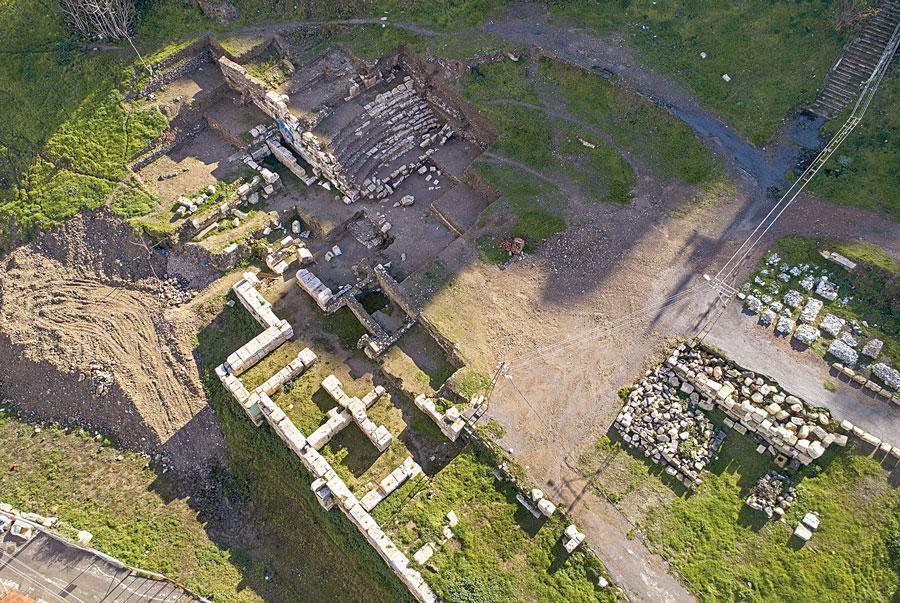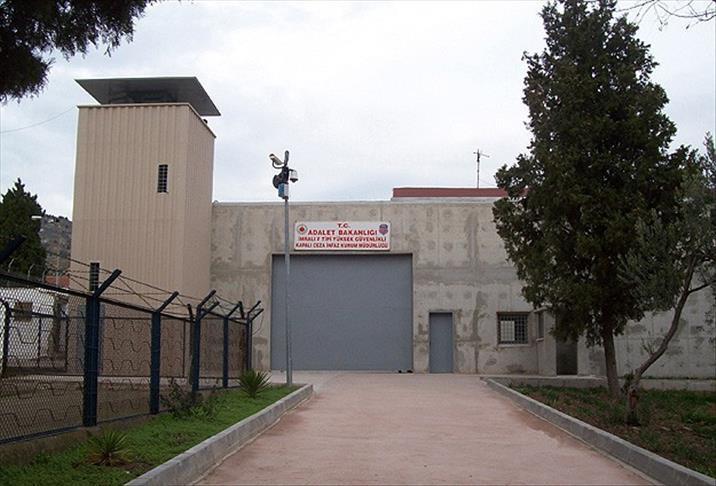Ancient theater being unearthed in İzmir
İZMİR

An ancient theater in the Aegean city of İzmir, built when its name was Smyrna during the Hellenistic period and buried under soil 1,500 years ago, is being unearthed in excavations.
An excavation team from Dokuz Eylül University (DEU) is carrying out the works in the almost 2,400-year-old ancient city with a permission granted by the Culture and Tourism Ministry. It has reached a portion of the theater founded on the Kadifekale slope.
The seats of the ancient theater, which was abandoned after serving for 700 years in the 4th century, were buried for hundreds of years. They were finally unearthed, becoming the first revelations of the theater that is yet to be unveiled fully.
Speaking to state-run Anadolu Agency, the head of the excavations, Akın Ersoy, who is also an associate professor of archaeology, said İzmir had a history of 8,000 years and the latest chain of the history was on the slopes between Kemeraltı and Kadifekale.
He said the construction of the Smyrna Theater, perched on a rocky hill with a magnificent view of İzmir, had started in 3rd century B.C. before serving for some 700 years.
Ersoy said people viewed theater plays and religious rituals in the theater, while some social activities were also organized at the venue in the past.
“When we consider the drawings in the sources and the remains, we can say that this is a theater of 20,000 people,” he said.
He said the theater was abandoned in 4th century when Christianity was gaining popularity and such activities were banned as they were considered pagan practices. “This led to theaters being abandoned. This then quickly led to the theaters being buried under earth within 100 years,” he said.
Ersoy said a neighborhood for immigrants coming to İzmir in the 19th century was established on top of the site of the theater. “Nearly 50 houses in the neighborhood, which survived for some 100 years, were demolished in 2012 after the area was declared a first degree archaeological site.”
He said that archaeological works were initiated in the area after the neighborhood was evicted.
“We started excavations as of 2012. Theater excavations are troublesome because both filling levels are too high and a significant amount of blocks were used in the construction of this monumental structure. We have reached the rows of seats during excavations after 1,500 years. Some of the walls have already been reached during the removal of the neighborhood. Next year we hope that we will reach the orchestra pit, which is one of the most important parts of theater structures.”
Ersoy said they also found ancient sculptures, coins and ceramics during the excavation works, and that İzmir and the scientific world gained a very important archaeological field.
“In the ancient period, ancient cities competed against each other. We are facing a contestant theater of a competitive city. Perhaps we will witness many new things with this theater. The next phase will be to make this place registered as an ancient site,” Ersoy said.
[HH] Characteristics of Roman era
The most comprehensive information about the ancient theater can be obtained from the plans, drawings and studies of Austrian architects and archaeologists Otto Berg and Otto Walter, who conducted research in the region in 1917 and 1918. According to their reports, the remains of the theater carry the characteristics of the Roman era.
Ancient sources claim that Saint Polycarp from İzmir was killed in this theater during the early ages of Christianity, in the pagan period of the Roman era, suggesting the theater had witnessed many instances of tragedy in its history.
After works are completed, the site will be accessible to those visiting the Konak, Alsancak, Karşıyaka and Bornova districts of the province. The renovated theater will host shows and concerts, similar to the Ancient Theater of Ephesus.
















